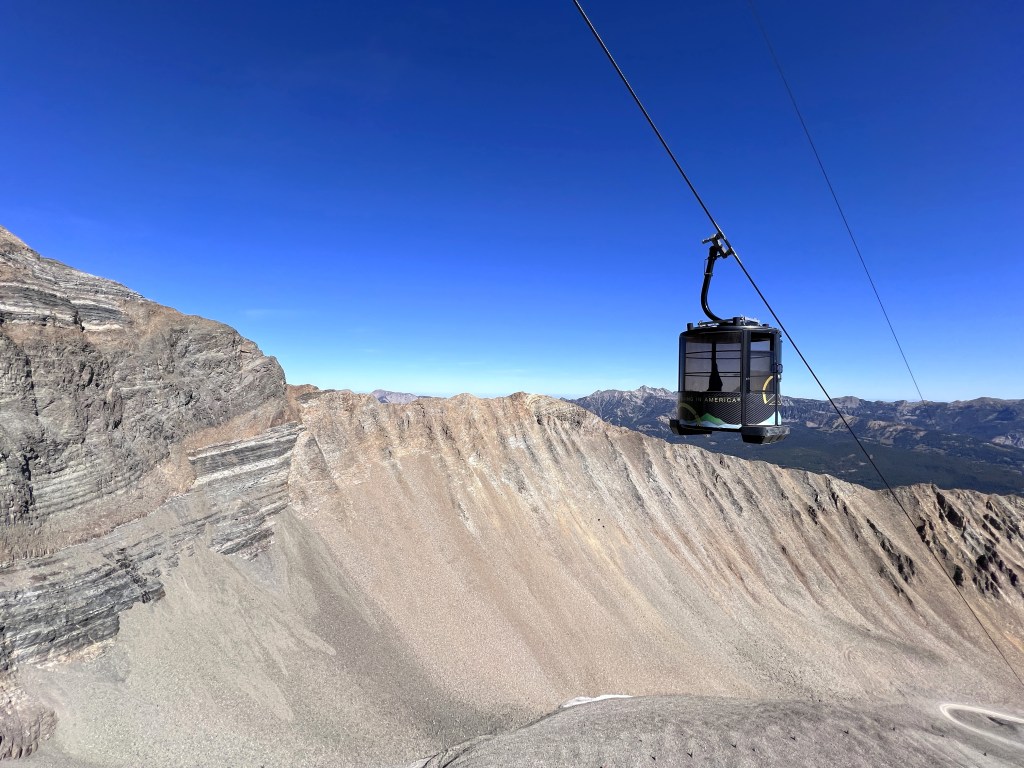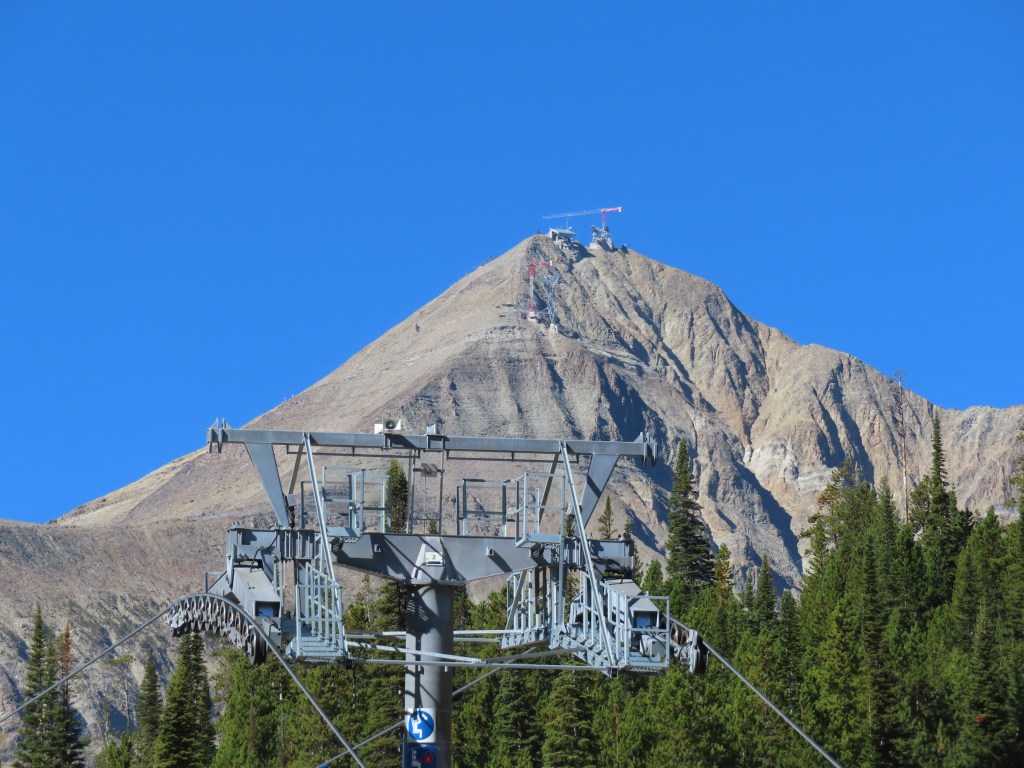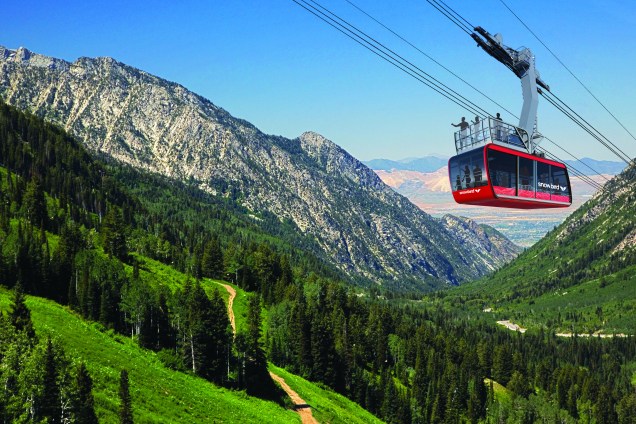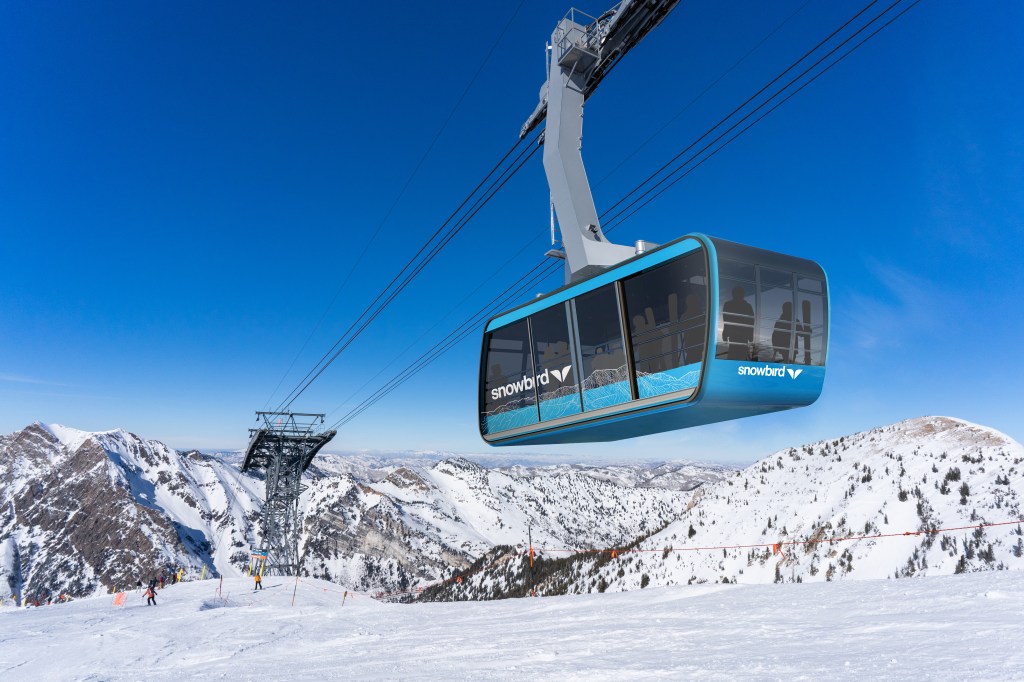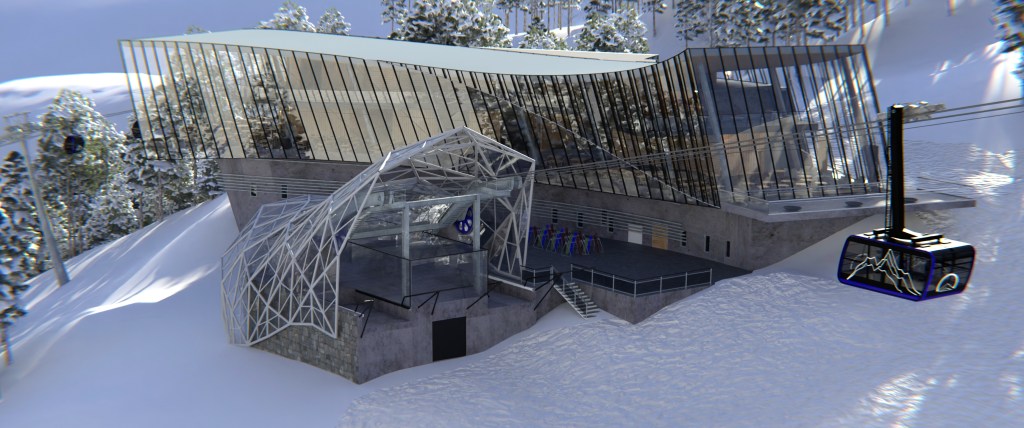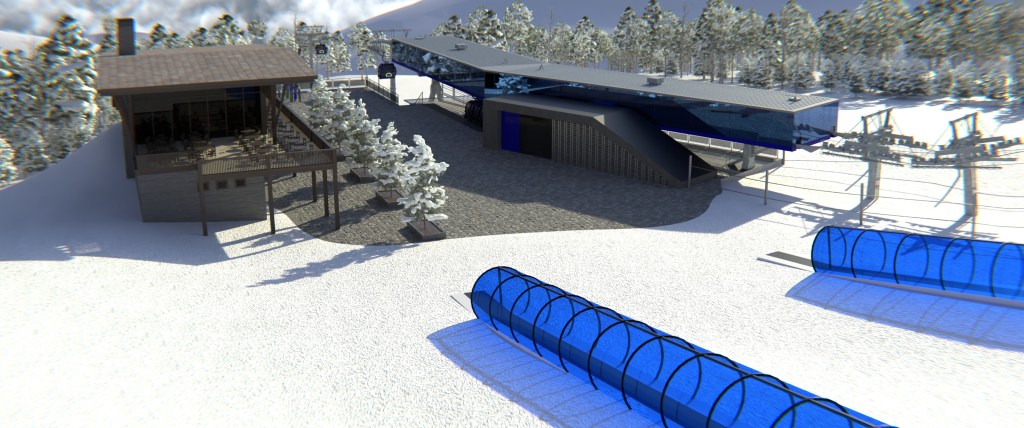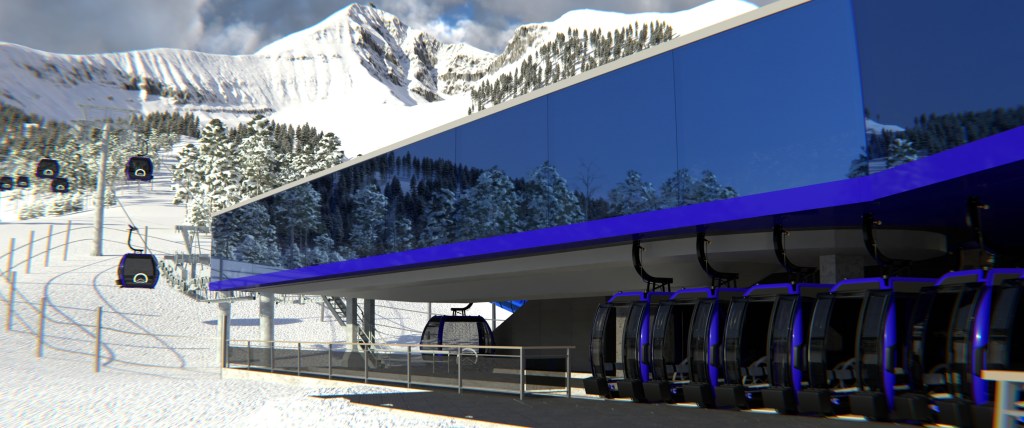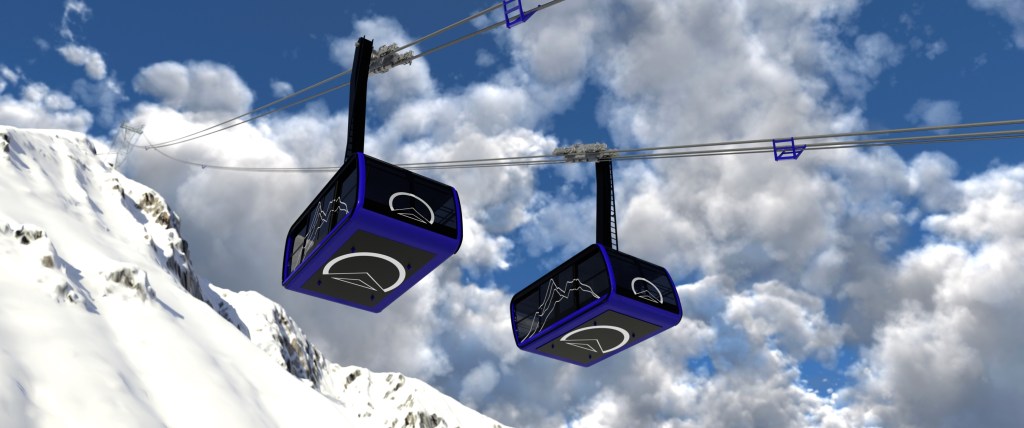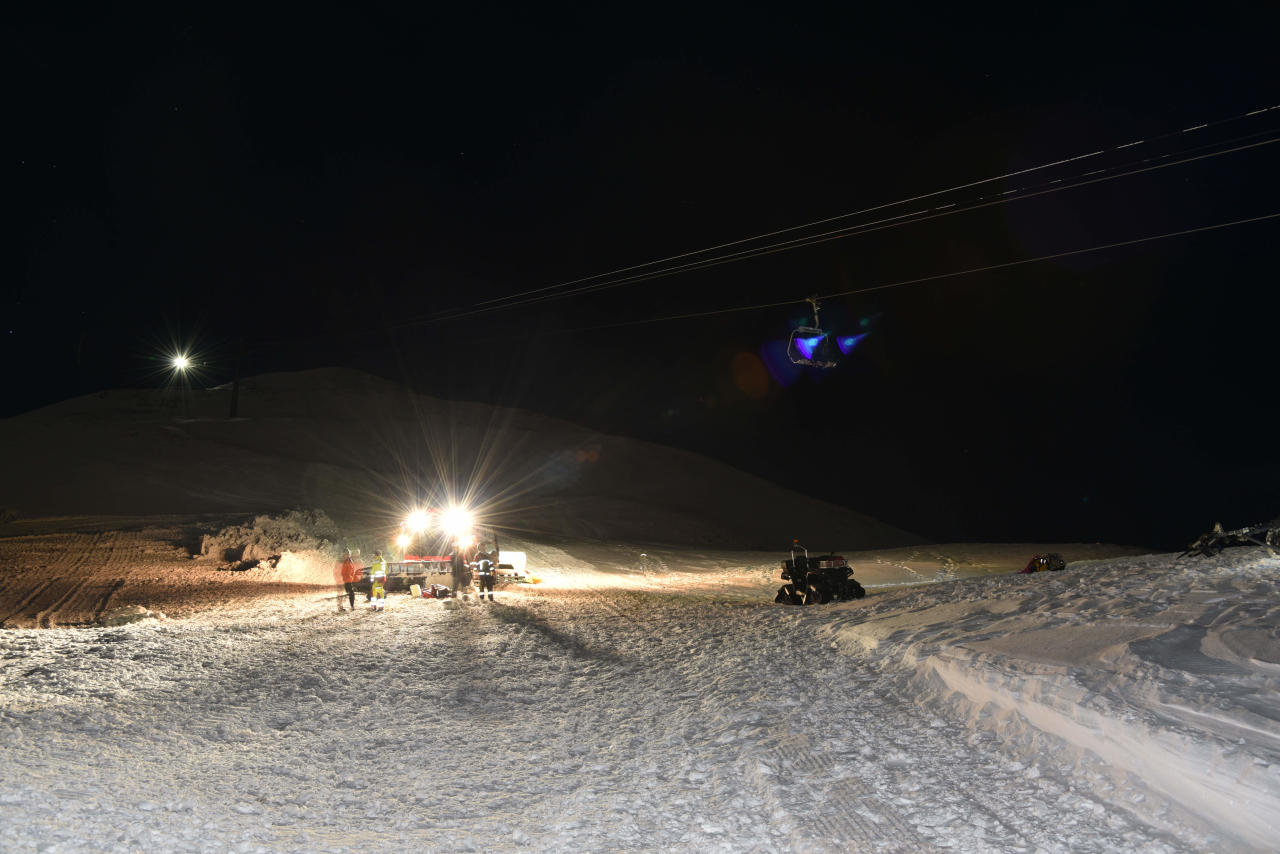- Leitner-Poma assures the public that recent stopping and swinging on the Roosevelt Island Tram pose no safety issue.
- Doppelmayr secures a five year maintenance and operations contract for the Sterling Vineyards gondola.
- Attendants and mechanics working for Doppelmayr at the Portland Aerial Tram may unionize.
- Garaventa completes the first Auro autonomous operation aerial tramway in Zermatt.
- A gondola in Raleigh, North Carolina?
- Officials release a 360 degree preview of the proposed Burnaby Mountain Gondola.
- Belleayre’s new quad will be called Overlook.
- Snow Valley shortens Chair 2 into a beginner lift with the drive terminal from old Chair 1.
- In Quebec, new owners of Mont Grand-Fonds plan a six seat detachable.
- No link but Mammoth tells me Chair 1 will be replaced in 2024.
- Sun Valley plans to replace Seattle Ridge with a six place detachable in ’24. Christmas is next but no timeline yet for that project.
- A judge will decide whether Park City Mountain’s Eagle and Silverlode upgrade projects can proceed in the future.
- Homewood bails on going private, potentially allowing the delivered Madden Gondola to be installed next summer.
- County officials order the nonprofit attempting to reopen Cuchara to stop work, citing safety concerns.
Garaventa
Big Sky Readies America’s Next Great Tram
Garaventa and Big Sky Resort are in the home stretch of a herculean effort to bring modern lift service to Lone Peak, the first new tram built at a North American ski area since 2008. Switzerland-based Garaventa is the same outfit that brought skiers the new Jackson Hole tram 15 years ago, the Snowbird tram in 1971 and the Palisades Tahoe tram before that.
The original Lone Peak Tram, which catapulted Big Sky to the upper echelon of extreme skiing in 1995, will carry its final souls a few weeks from now. The only passengers left to hoist are construction workers and a few lucky spectators touring the progress. With one rope and 15 passenger “beer can” cabins, the tram is more jig-back gondola than a true aerial tram. It was built by Doppelmayr, the Austrian heavyweight which absorbed Garaventa six years after skiers began conquering Lone Peak. Garaventa remains a specialized subsidiary of the Doppelmayr Group focused on aerial trams, funiculars and the Swiss market.
The old tram needed to go. The bottom terminal was built atop a rock glacier and, while designed for it, flowed at least 25 feet downhill over the past 28 years. The lower dock no longer sits level such that water pools in triangles at corners. Erroneous faults occur routinely as the tram completes its final missions to 11,166 feet (it’s not a safety issue, each fault is investigated before the lift is restarted).
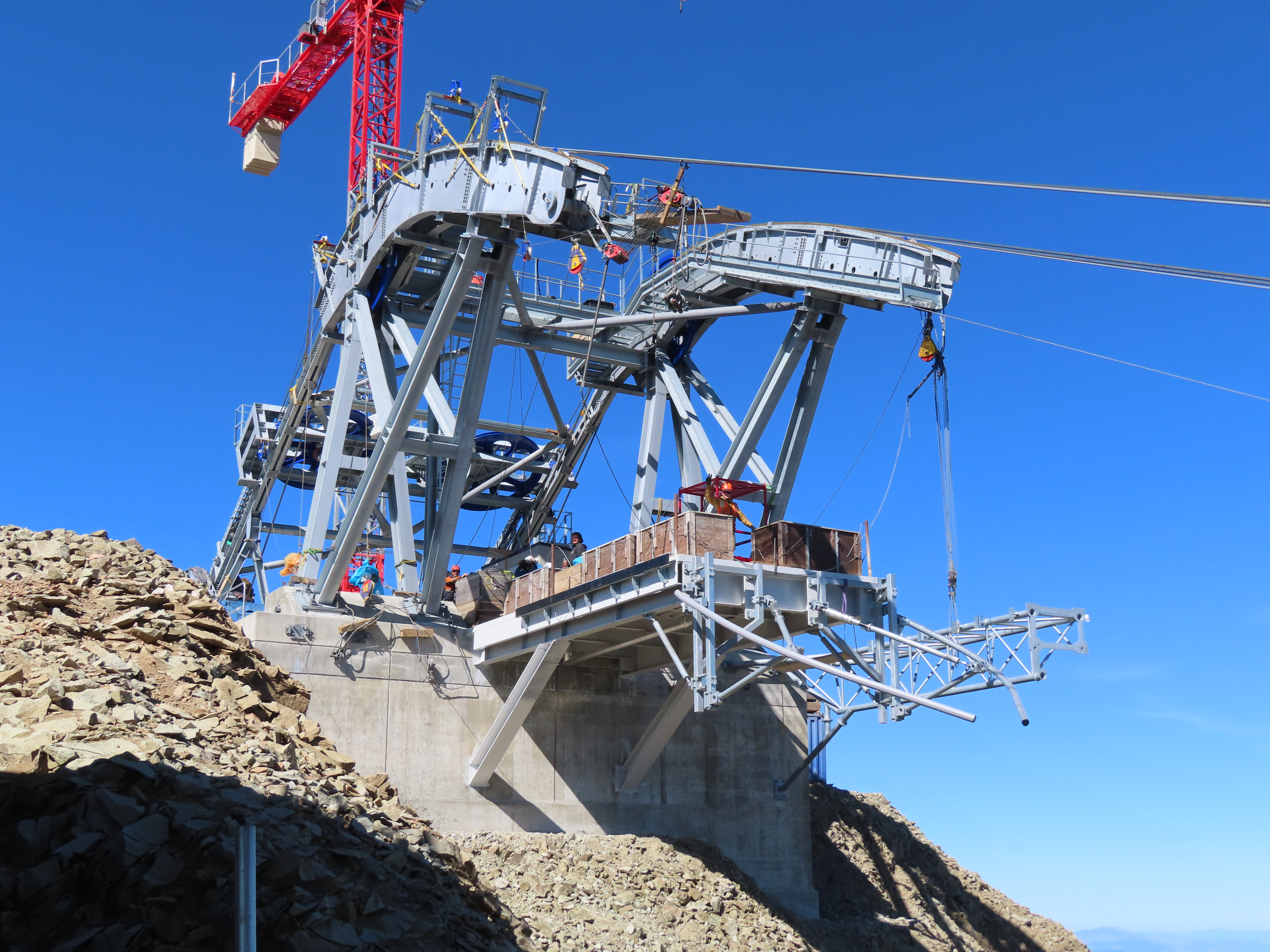
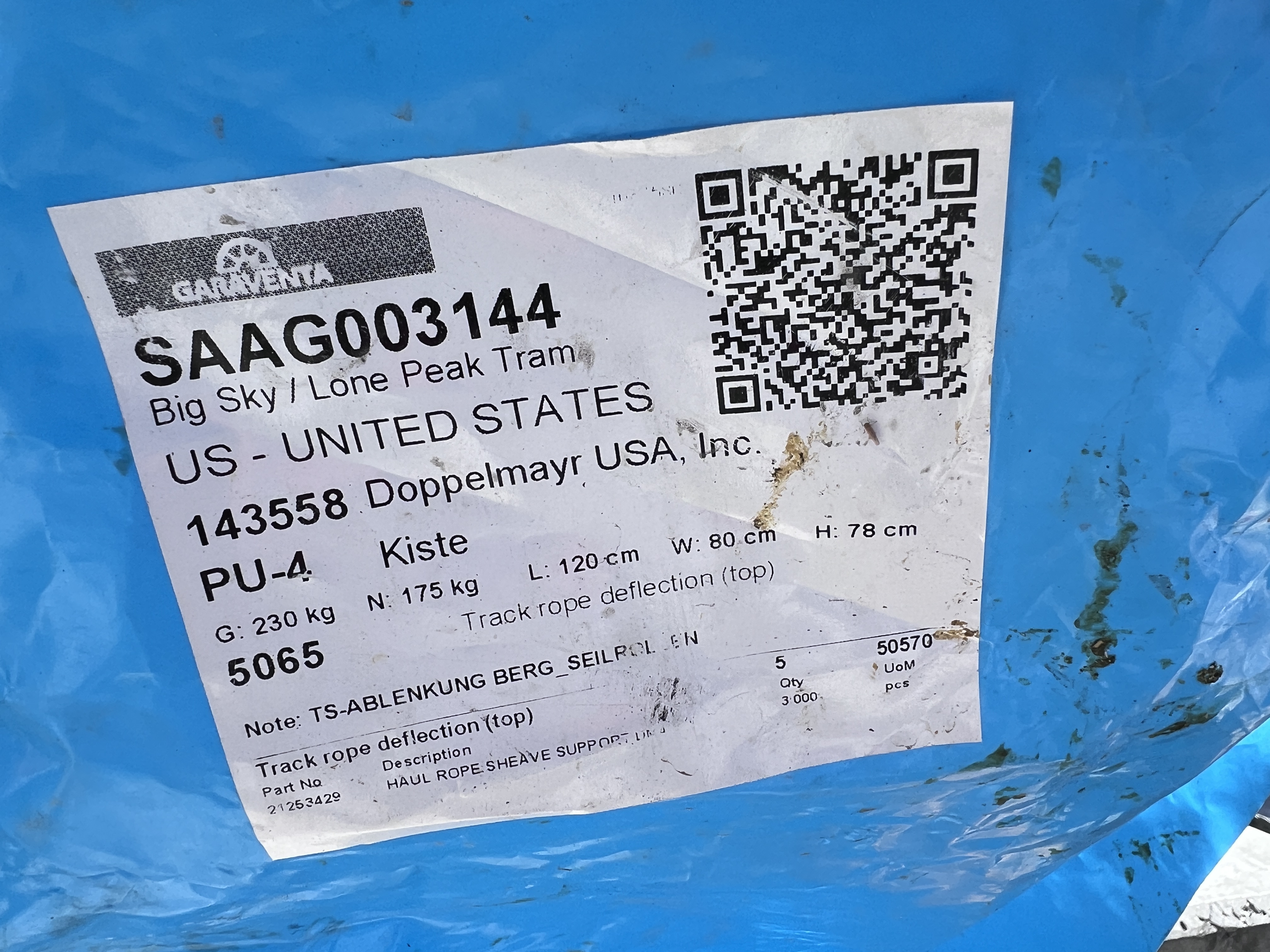


This summer’s greatest challenge was not the tram installation itself but rather setting twin tower cranes needed to build the 100 foot intermediate tower and top terminal. Each crane had to be flown in sections weighing up to 9,000 lbs. It took multiple Chinook helicopters weeks with pauses for bad weather and other setbacks. Once the cranes were live and Big Sky’s own employees trained to operate them, the installation team from Garaventa could get to work.
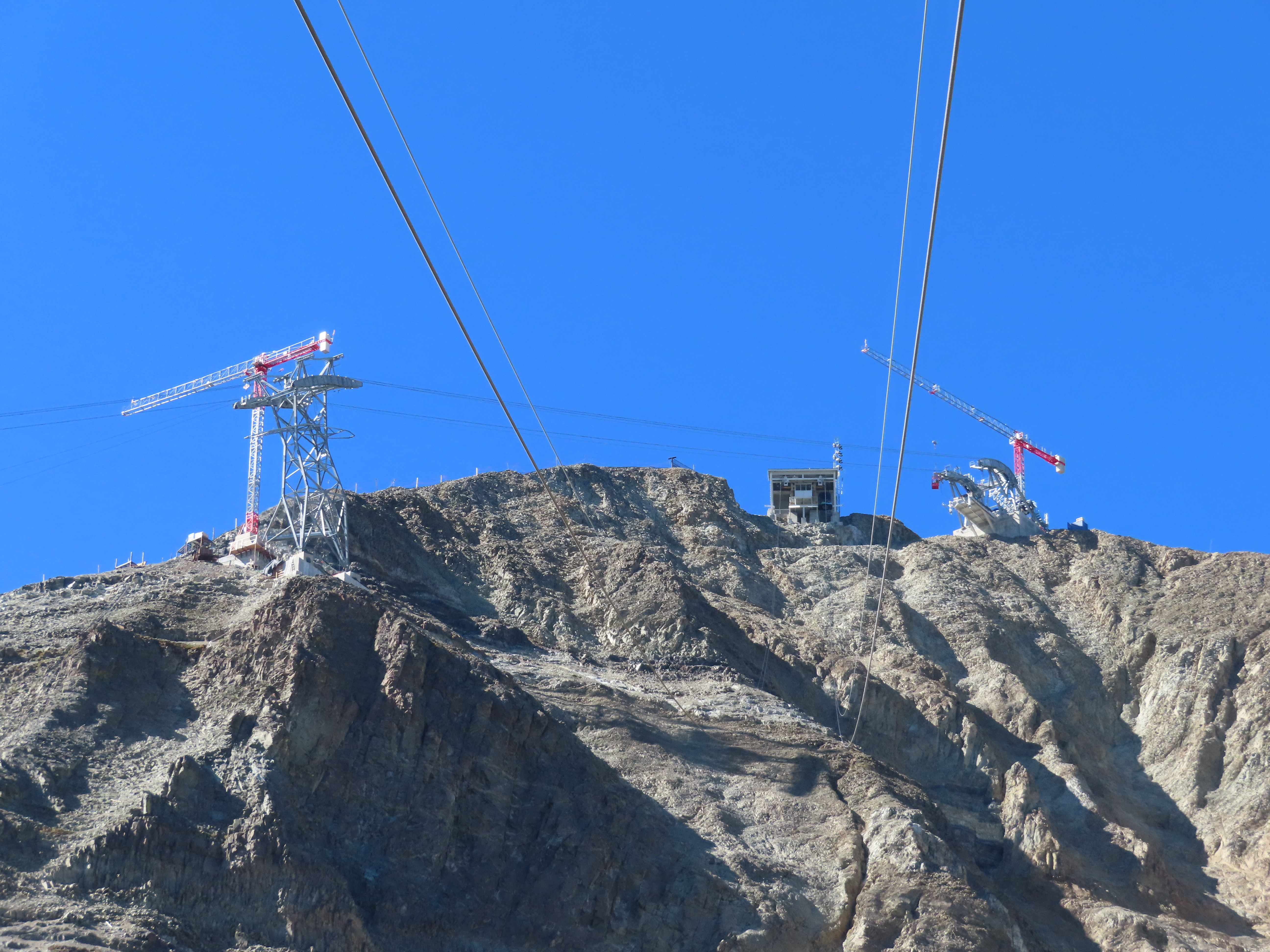
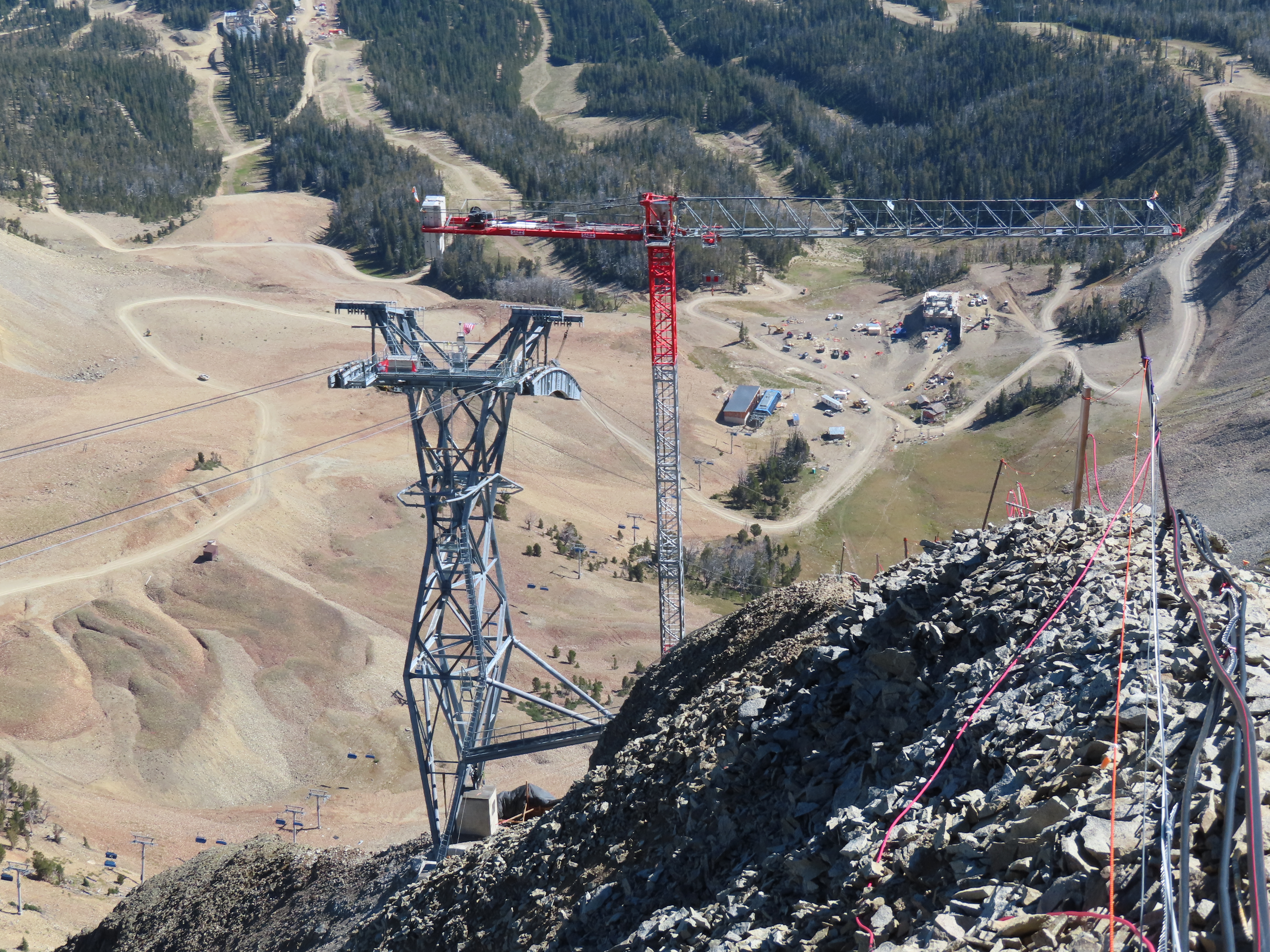
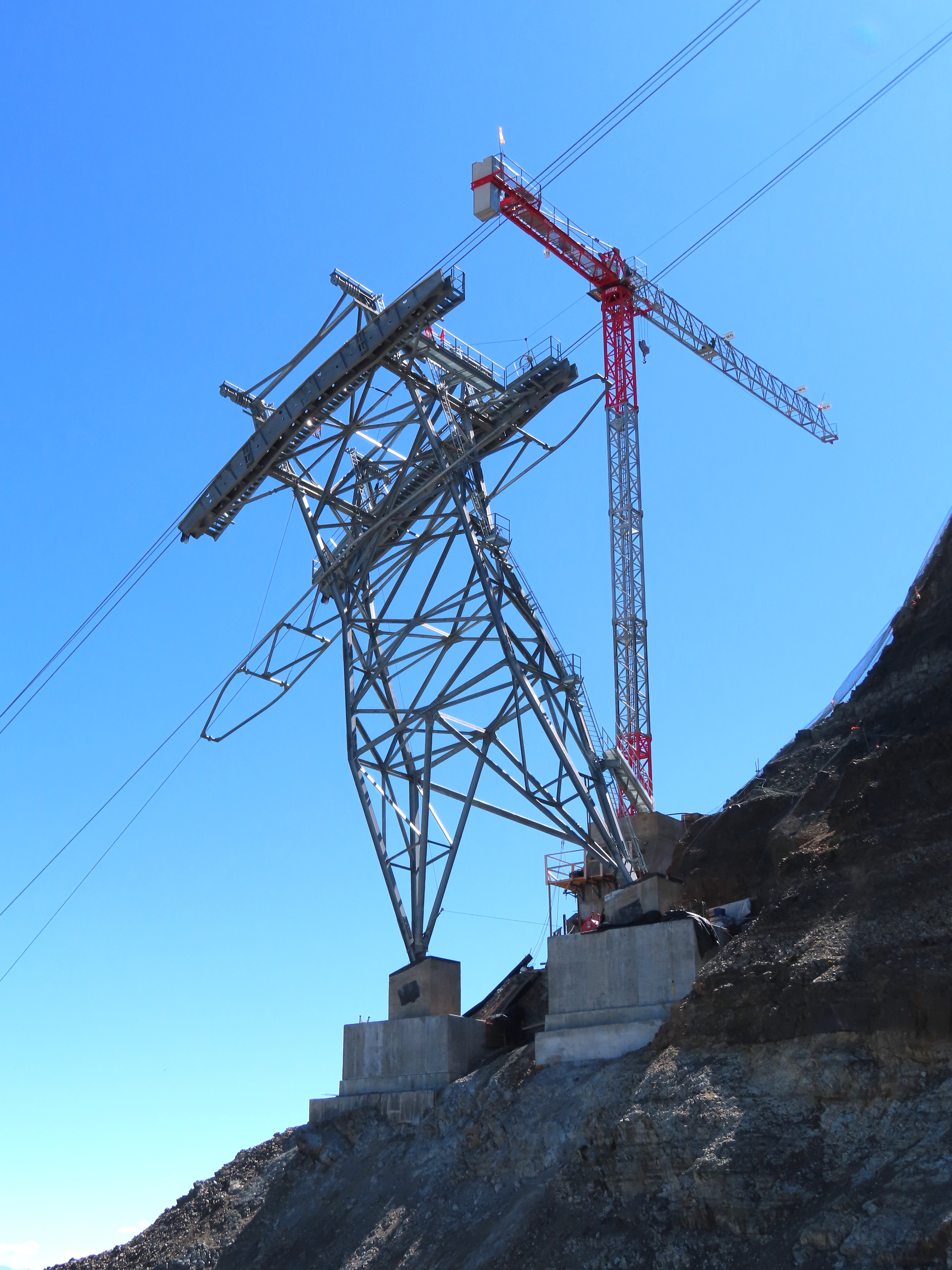
Big Sky and contractors completed micropiles, tiebacks and concrete work last summer, setting the stage for this summer’s steel erection and rope pulling marathon. As of today, three of the four track ropes are on their bollards. A fourth track rope pull is in progress with the haul rope on deck. For each track rope, a helicopter pulled a 10 mm pilot line up to the top terminal and back down. Then crews attached and pulled successively larger 18 mm, 22 mm and 32 mm ropes until finally the smooth 48 mm track rope was up the line. The process is slow and steady with up to 10 Swiss men on headsets and binoculars monitoring every inch of progress for 5-6 days per rope. The 37 mm haul rope will be pulled in similar fashion and spliced into a continuous loop like more traditional ski lifts. The tram will be driven from the bottom station with no counterweight required for tensioning. Redundancy is built in everywhere, from multiple transformers to dual motors, evacuation drives and generators. Frey AG Stans supplied the lift’s state-of-the-art control system, similar to one recently installed on Snowbird’s tram.

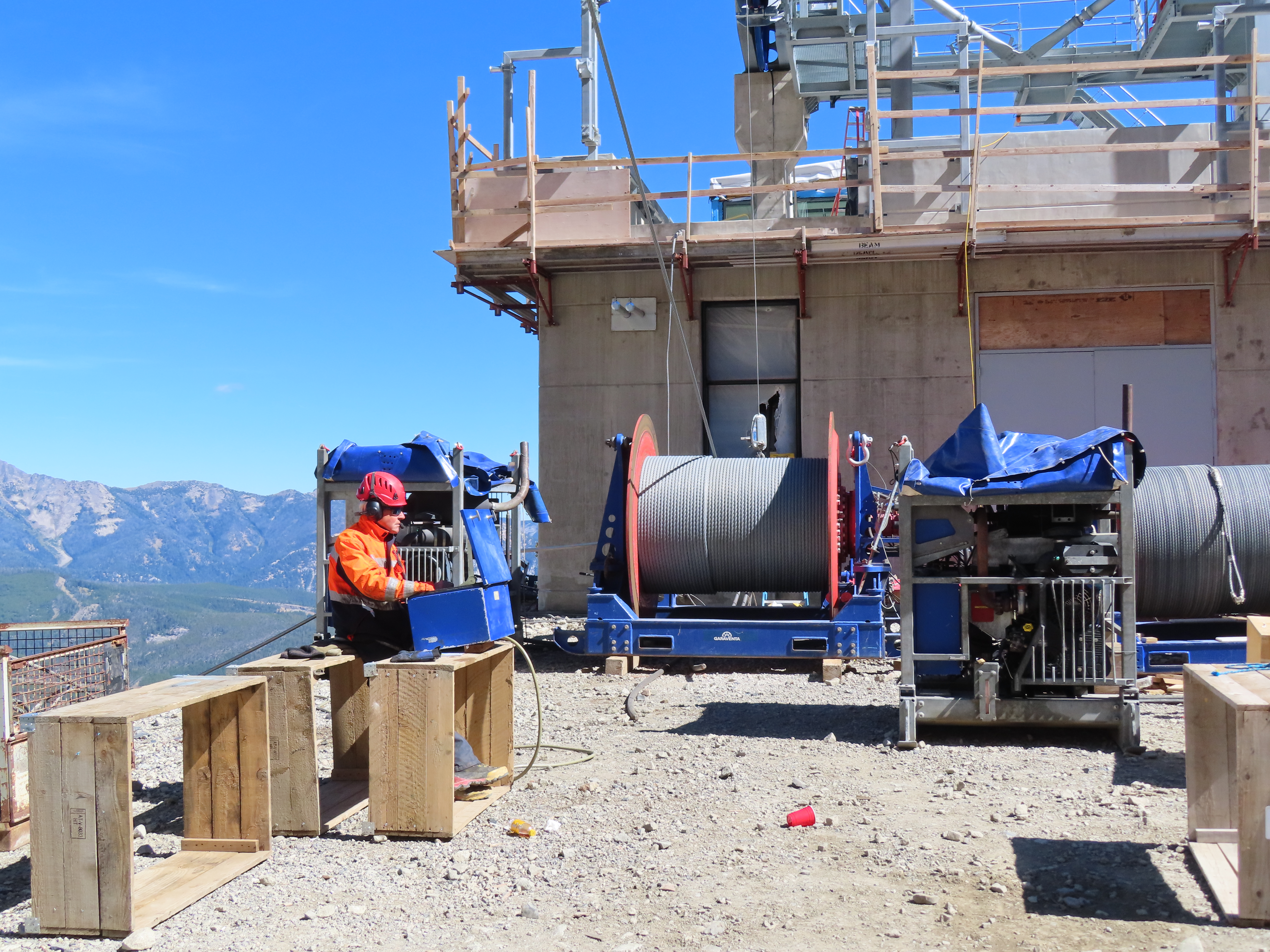
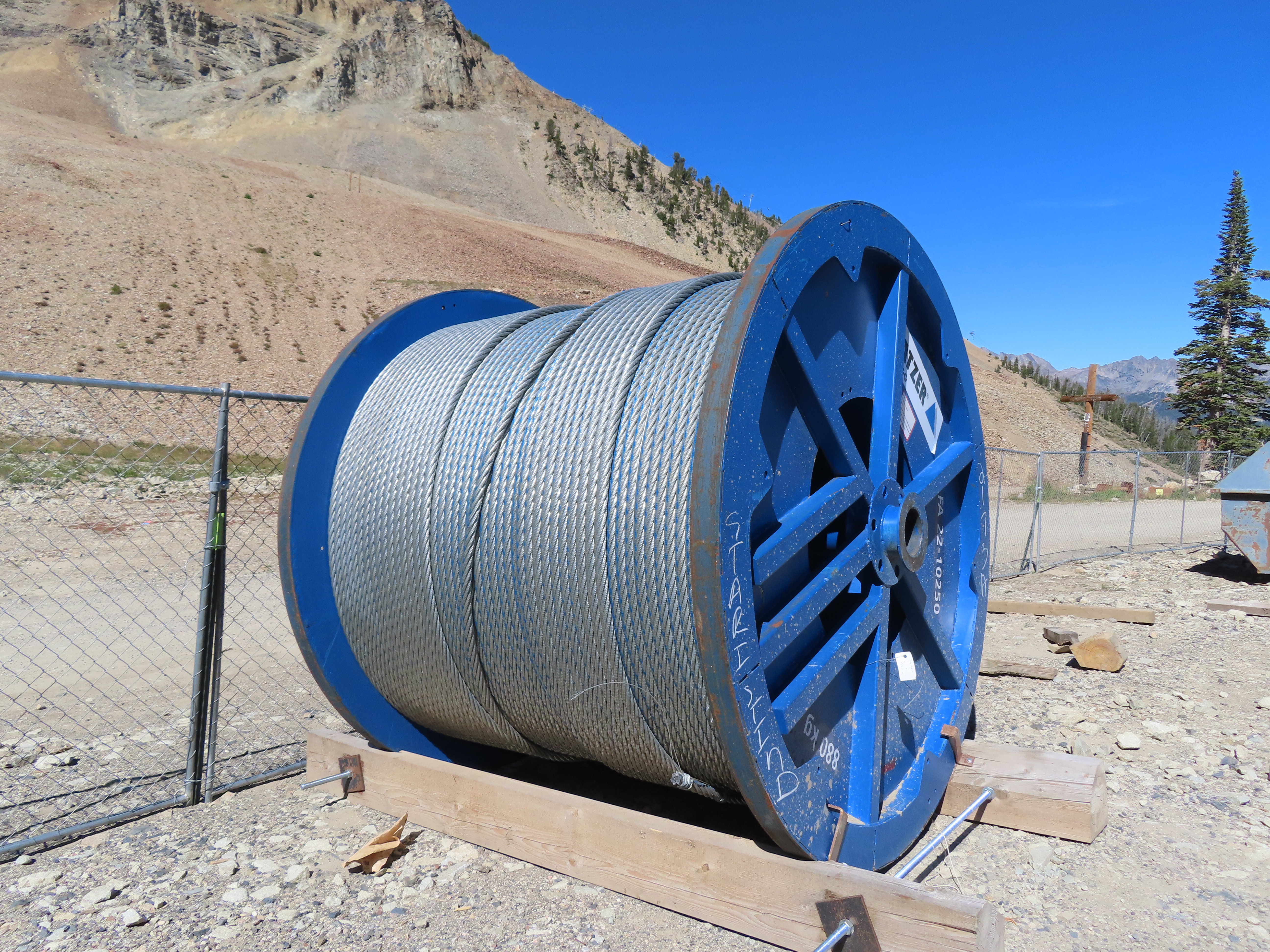
This winter, guests will pay per tram ride rather than a daily rate as they did in the final years of the old tram. Big Sky notes the average tram day pass purchaser only rode 1.8 times. The privilege cost $20 to $100 depending on demand and some were riding the tram multiple times solely to feel better about their investment. This added to long lines and detracted from the Lone Peak experience. New tram access will cost less – $10 to $40 per ride – charged automatically to a credit card with each scan at the bottom dock.
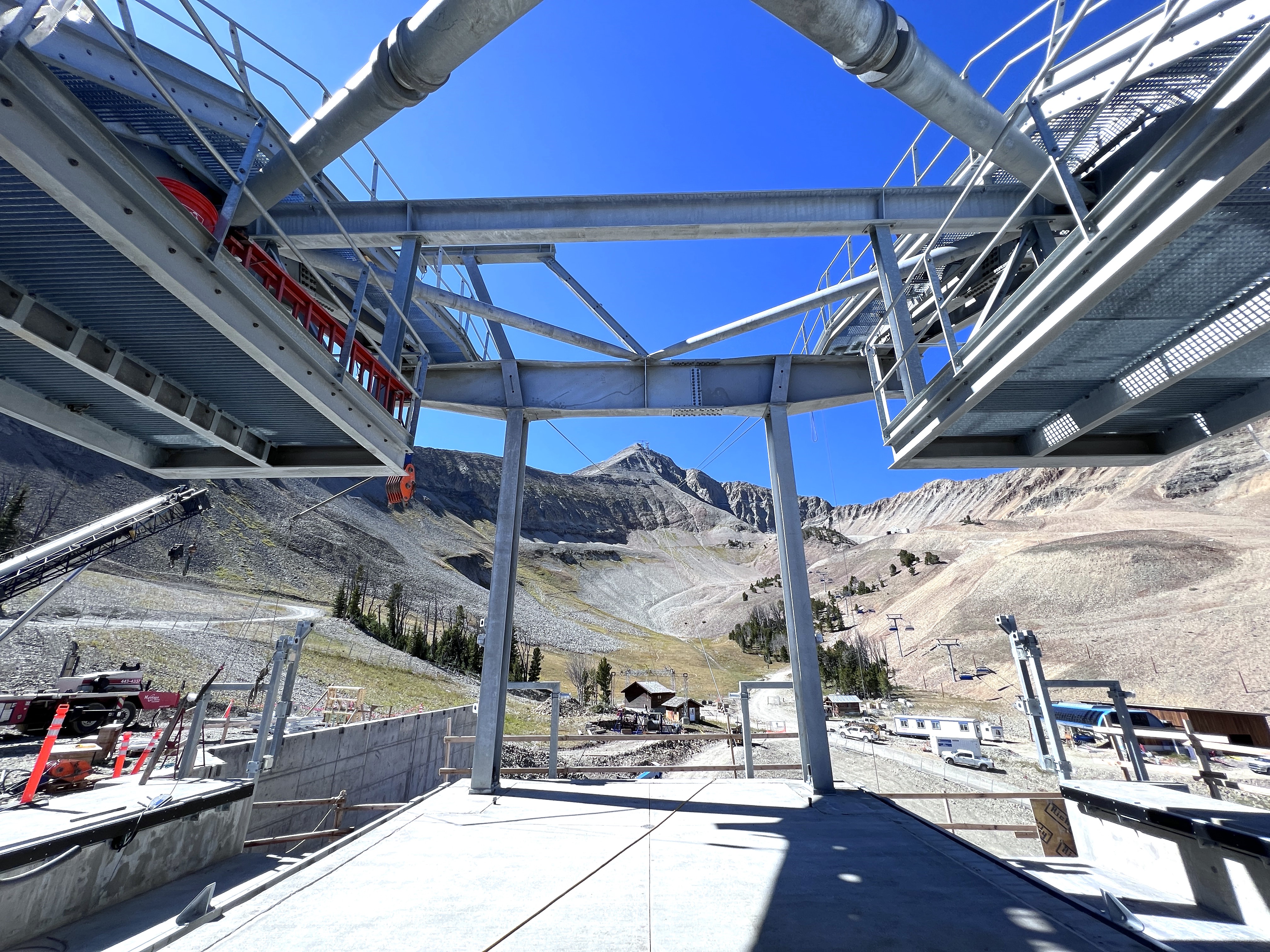

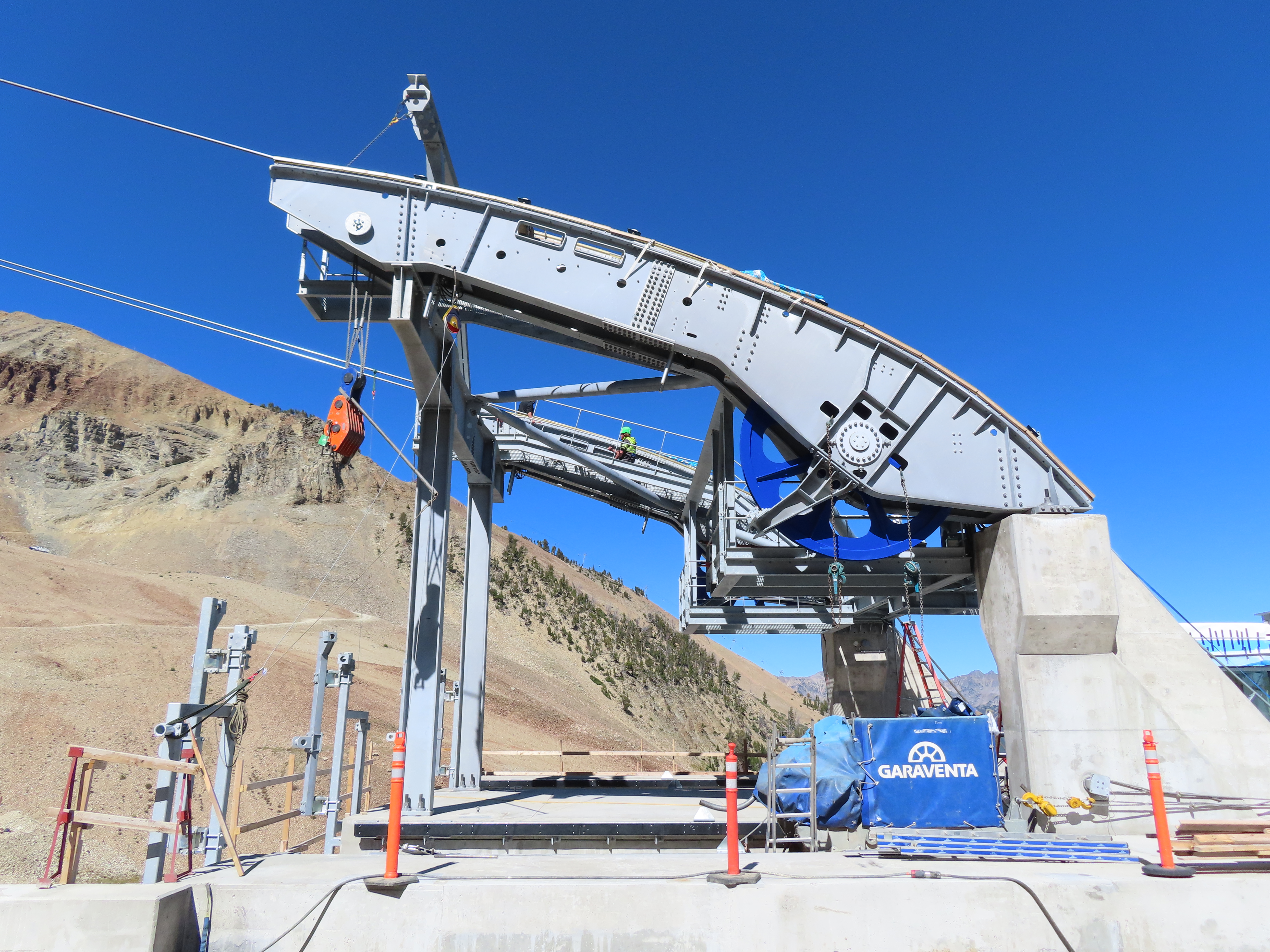

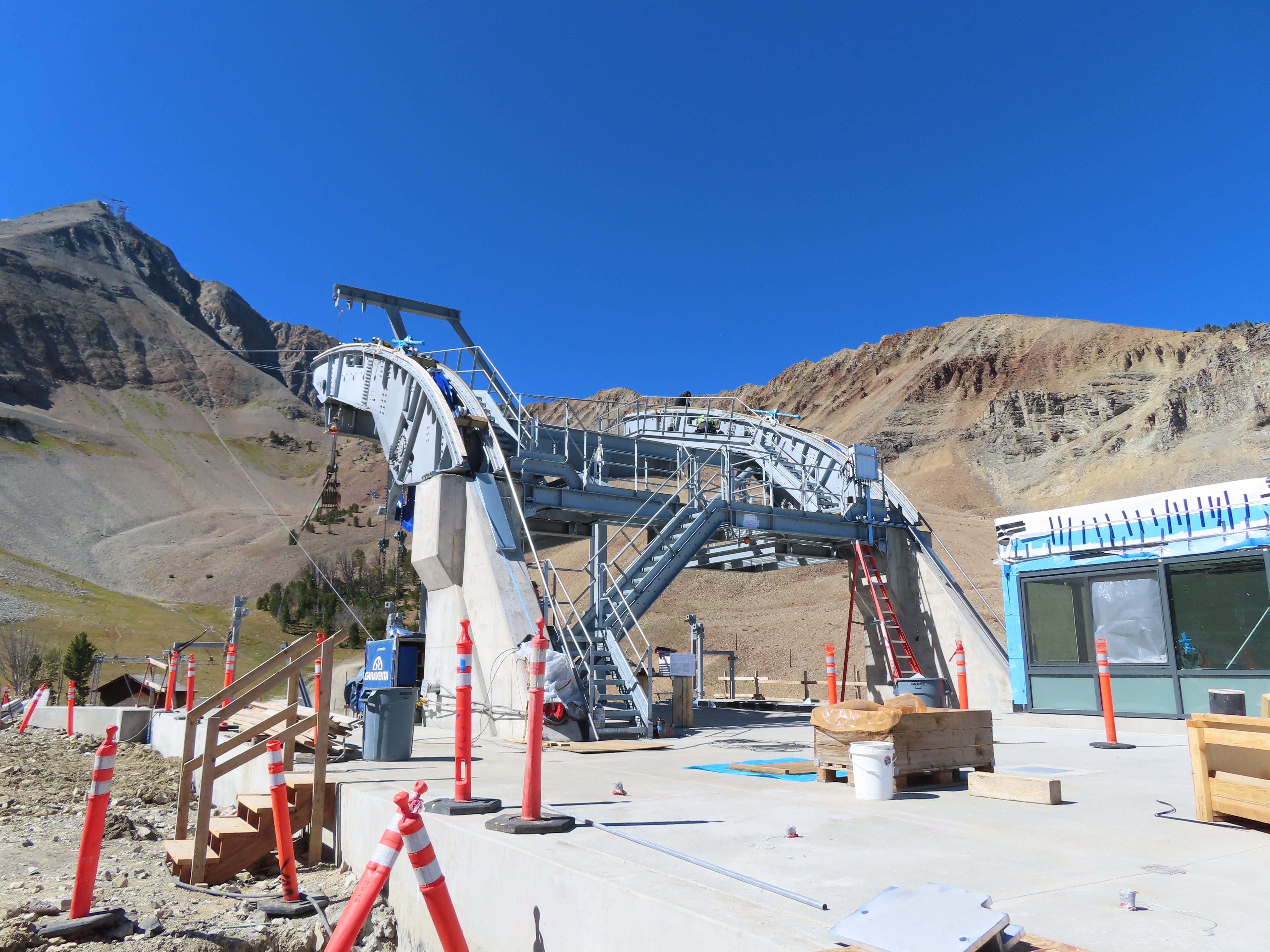
Big Sky Ski Patrol will monitor conditions hourly and decide how many skiers and snowboarders to let on the cars, which can hold up to 75 riders. Big Sky will also debut a sightseeing specific line designed to fill excess tram capacity with guests not utilizing limited ski terrain off the summit. Come 2025, foot passengers will be able to ride a new 10 passenger gondola from the Mountain Village right to the base of the new tram. This boarding location lies 700 vertical feet lower than the old tram station, eliminating the need to ride Powder Seeker for a tram lap. Most importantly, it’s below the rock glacier. The new tram will eventually open year round, though summer 2024 will be spent completing glass enclosures around each station.

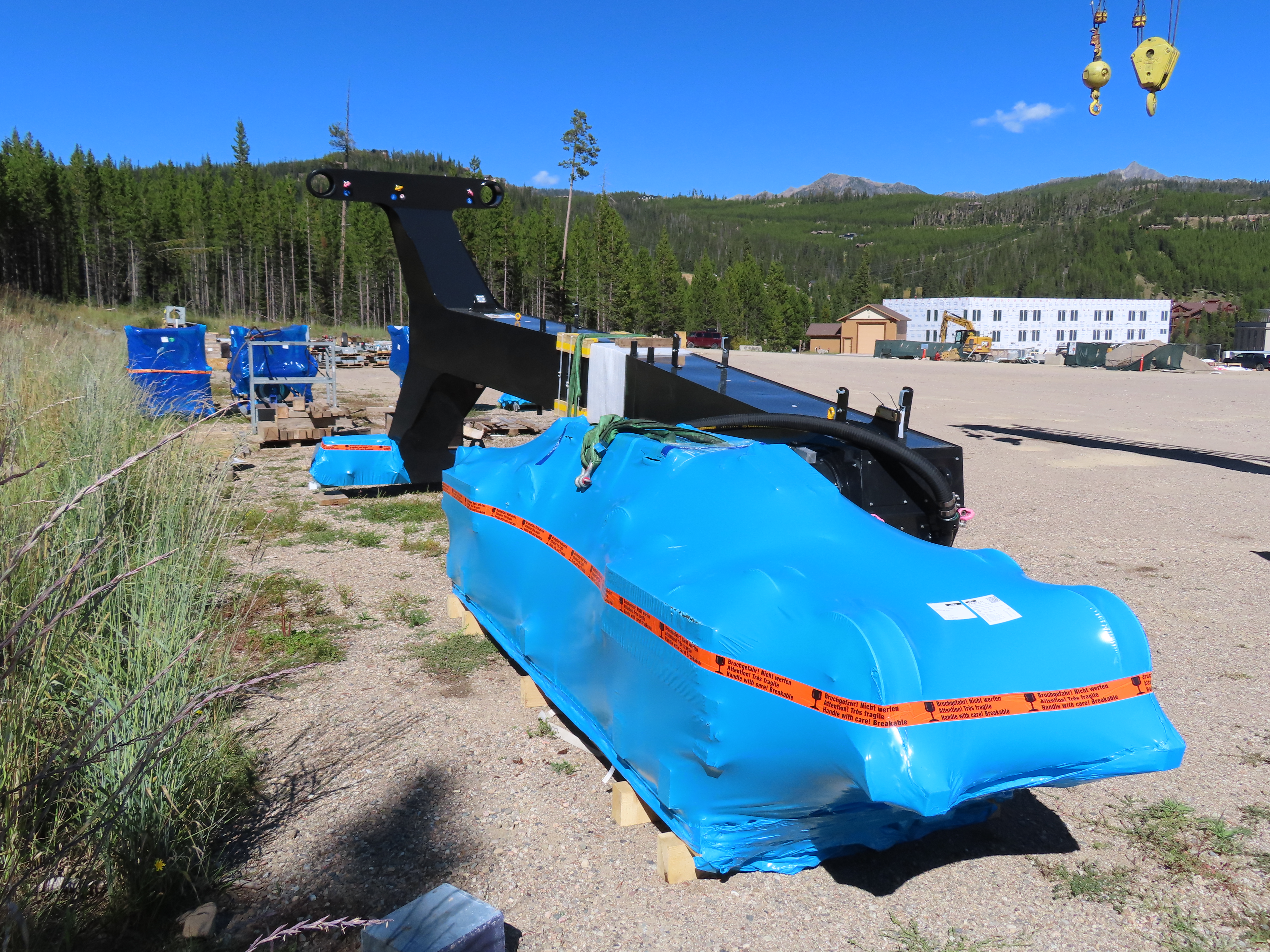
Once rope pulling wraps up, the tram’s two cabins will be driven up from the village and attached to the haul rope. The CWA cabins will feature automatic doors, a glass floor panel and seating for 12. Acceptance testing is expected to take four to five weeks. Big Sky has been careful not to advertise a grand opening date, but the word December is being thrown around. That month will mark 15 years since the last new tram debuted in this part of the world and 50 years since Big Sky opened.
Snowbird Debuts Tram Rooftop Balconies
Starting today, anyone over 42 inches tall can ride on the roof of the legendary Snowbird Tram and enjoy unobstructed views of Little Cottonwood Canyon. The first-of-its-kind experience in the United States will cost $20 on top of a tram ticket, which currently runs between $37 and $42. I took a preview ride last night and enjoyed the open views of the carriage, towers and mountains during the trip. In addition to hosting the first public riders on the balconies today, the tram is also carrying the last skiers of the season up Hidden Peak this weekend.
Grouse Mountain in Canada debuted a similar rooftop option on its Garaventa tram in 2016 but it has been closed since Covid. At Snowbird, balconies are certified for up to 14 people but Snowbird plans to start with no more than 11 guests per trip. Riders ascend a staircase within the tram cabin during boarding and stand in a designated L-shaped area while the tram is in motion. Speed and capacity of the tram are limited when the system is in balcony mode. CWA and Garaventa designed a safety gate that is tied into the lift control system to prevent passengers from ascending or descending the staircase while the trip is underway. Cabin operators also have live video feed of the rooftop and Snowbird plans to have an additional operator on the balcony during each trip.
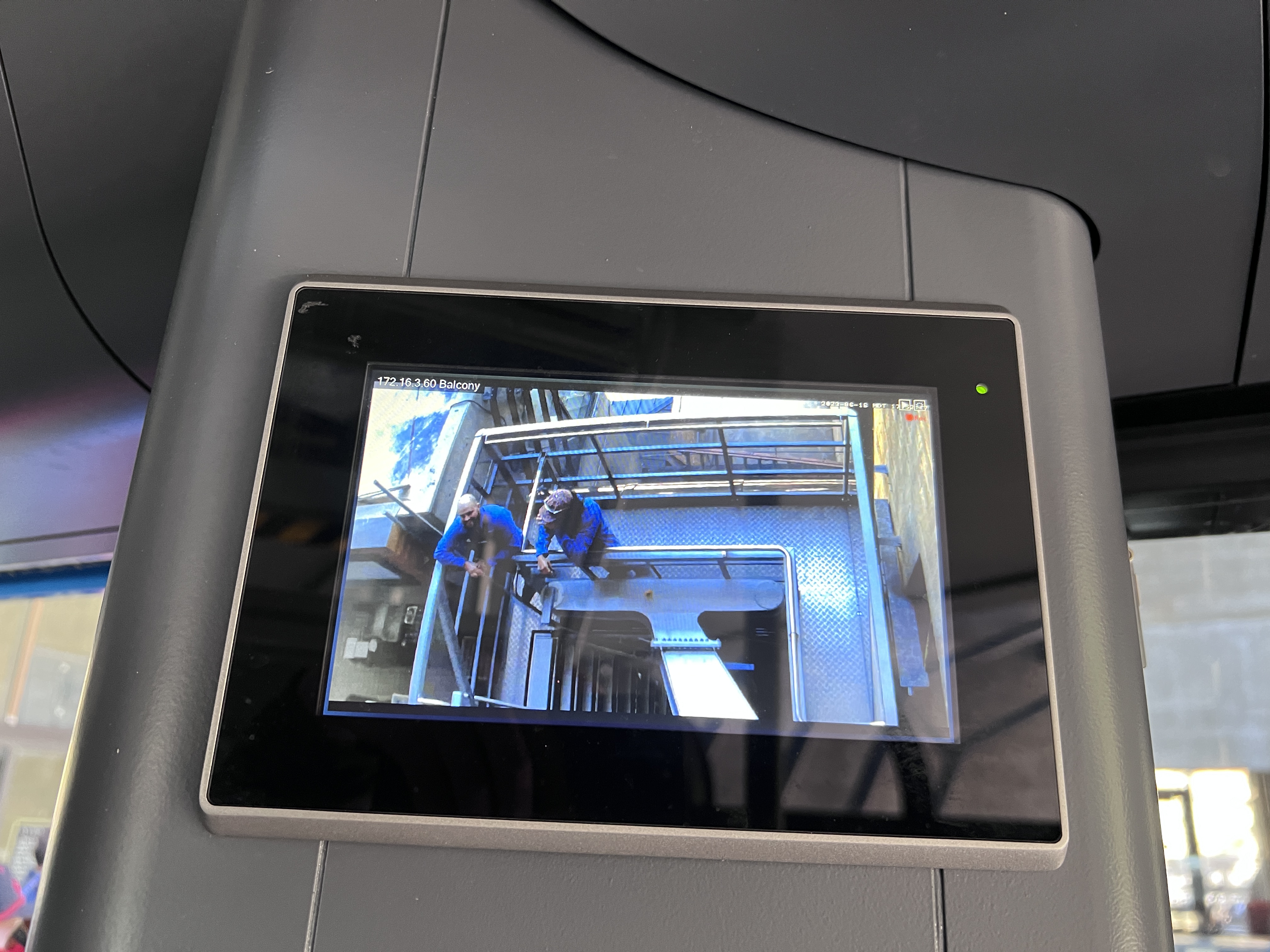
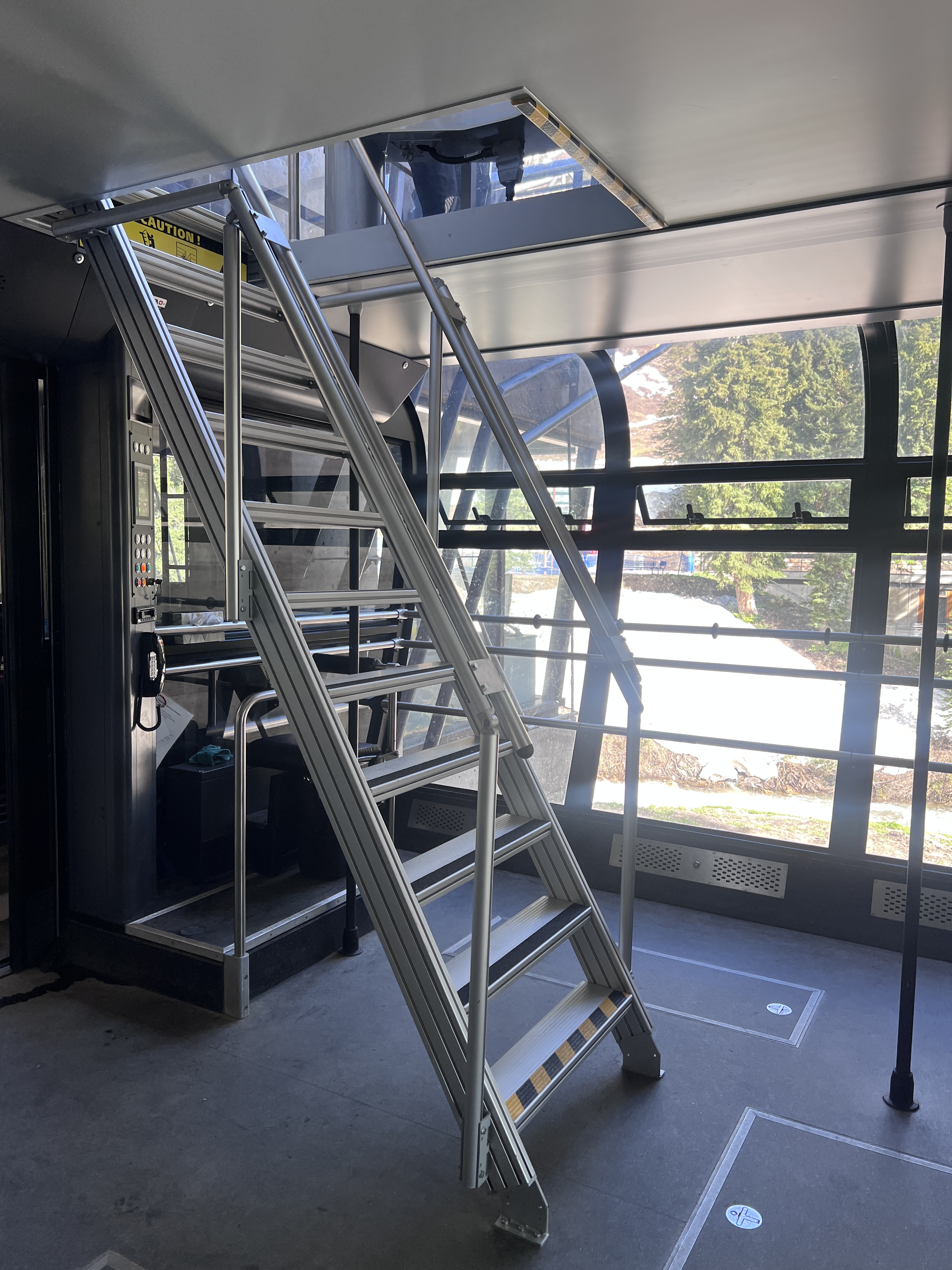

The new balconies, along with glass floor sections, are a summer-only offering and will be removed each winter season. This summer the tram is open 11:00 am to 8:00 pm daily, weather permitting.
News Roundup: Allegations
- With energy at a premium in Europe, Leitner showcases technology which regulates the speed of a ropeway based on rider demand.
- The nonprofit which has been running Big Squaw says the sale to Big Moose Development still hasn’t been completed and this season will continue as normal.
- Sugarbush confirms a Heaven’s Gate replacement is in the works but it won’t happen in 2023 as lift prices surge and lead times increase.
- Ropeway pioneer Willy Garaventa dies at the age of 88.
- Los Angeles releases the Environmental Impact Statement for the Dodger Stadium gondola project.
- Names for the five new Skytracs at Jack Frost Big Boulder are: Blue Heron, Harmony, Paradise, Pocono and Tobyhanna.
- Groupe Le Massif remains interested in acquiring Mont-Sainte-Anne from Resorts of the Canadian Rockies and would also be open to acquiring Stoneham as part of a deal.
- After multiple years of construction, Ontario’s Mt. Baldy finally has a new chairlift.
- Mount Snow will sell more double, triple and quad chairs for charity.
- New York’s Attorney General sues the owners of Labrador Mountain and Song Mountain, alleging their purchase and closure of nearby Toggenburg was anti-competitive. Former Toggenburg/current Greek Peak owner John Meier agreed to pay the State $195,000 and will cooperate in the case against Labrador and Song’s parent company.
- The Governor of Utah throws his support behind the Little Cottonwood gondola project.
- A new document shows where Mammoth’s relocated Panorama Gondola and new Big Bend chairlift would run as part of the Evolving Main project.
- The Commonwealth of Pennsylvania again seeks an operator to revive the Denton Hill Ski Area.
New Snowbird Tram Cabin Damaged During Installation
One of the new cabins being installed on Snowbird’s Aerial Tram fell Saturday during installation, causing significant damage. Thankfully the incident occurred in a closed construction area at the base of the mountain and no one was injured. Snowbird said the root cause was some sort of equipment malfunction. “An investigation is under way to determine where the malfunction occurred,” the resort said in a statement. Upgrades to the tram are being carried out by Doppelmayr/Garaventa, the original manufacturer of the tram. The project includes new cabins with rooftop viewing decks, new controls, bullwheels and other upgrades.
The modern red and blue cabins were manufactured in Switzerland by CWA Constructions and had just arrived in Utah. Snowbird said Doppelmayr and CWA will work to replace the likely damaged beyond repair red cabin in time for the 2022-23 winter season. Snowbird and Doppelmayr are also also working on a plan to have at least partial tram service for this summer. The tram was originally scheduled to re-open with new cabins in late June.
Aerial tram cabins are custom built with long manufacturing lead times. In 2012, an Alyeska tram car was destroyed after hitting a tower in high winds. Service resumed about six weeks later with one cabin and a second car was installed and operational about five months after the incident. In September 2018, a brand new tram cabin in Germany was written off following a training accident. That tramway reopened just over three months later with a newly-manufactured cabin from CWA.
New Tram Cabins Coming to Snowbird
The iconic red and blue tram cars which first came to Little Cottonwood Canyon in 1971 are being replaced. “After 50 years of a job well done, it’s finally time for the original Tram cabins to become literal snowbirds and enjoy some much-deserved retirement,” Snowbird announced today. It is estimated the original cabins have traveled 794,994 miles, or the equivalent of traveling to the moon and back over one and a half times.
Manufactured by CWA in Switzerland, the new cabins will feature floor-to-ceiling windows and a modern design. During the summer months, the tram will sport three 3-foot by 3-foot glass floor panels and an open air rooftop balcony for up to 15 people. “The new Tram cabins pay homage to the original Red and Blue Trams while incorporating a fresh, sleek design and a few extra bells and whistles,” said Snowbird.
The last day to ride the current tram cabins will be April 3rd. The new cabins are already complete and currently being shipped to Utah. Upon arrival in April, the cabins will be installed and tested with re-opening of the tram planned for late June.
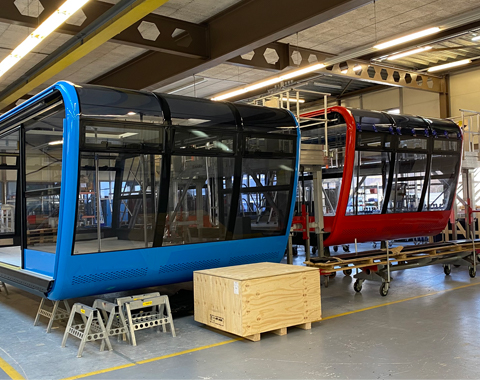

Big Sky to Transform Base-to-Summit Lift Experience
The final chapter of Big Sky 2025 will be the largest yet, with a new gondola and tram connecting Big Sky Resort’s Mountain Village to Lone Peak. This multi-year project will cement Big Sky as a leader in lift technology among North American resorts.
Big Sky embarked on the 2025 initiative six years ago to enhance the mountain experience with a focus on lifts and dining. Boyne Resorts partnered with Doppelmayr to bring North America’s first eight place and fastest six place chairlifts to Big Sky in 2018 and 2021 and now the companies will build two more signature lifts leading up to 2025.
A new Explorer Gondola will load at the north end of the village and replace Big Sky’s last remaining original Heron-Poma lift which turns 50 next year. Together with Ramcharger 8 and Swift Current 6, three high capacity D-Line lifts will all load in the village. An intermediate gondola station will house a new ski school center and underground parking for cabins. This station will also include a direct drive powering both gondola haul ropes via a double-grooved bullwheel. Cabins will turn 22 degrees before ascending to a second new lodge near the top of Big Sky’s original Gondola One. Unlike Boyne Resorts’ five other D-Line lifts, the Explorer Gondola will feature squared glass enclosures, matching the style of the new tram stations and Bowl restaurant. The architecture alone will be unlike anything else in North American skiing.
Garaventa will build the reconfigured Lone Peak Tram, which will start at the new mid-mountain hub and operate year round. Large cabins will pass one tower before arriving at a glass-enclosed terminal at 11,166 feet. The new tram will be nearly twice as long as the current one but also faster and more capable.
“The new lift system from the base area to the summit of Lone Peak will revolutionize the way we access ‘America’s Matterhorn’ in both winter and summer,” said Big Sky Resort president and COO Taylor Middleton. “In creating this must-do experience accessible to all, we will offer the premier high-alpine experience on Montana’s highest scenic overlook.” Although tram cabins will be able to accommodate more passengers at once than the current 15 person tram, Big Sky plans to carefully manage throughput depending on conditions and season.
“We couldn’t think of a more significant and emblematic series of initiatives to close out the transformation we’re accomplishing with the Big Sky 2025 vision,” noted Stephen Kircher, CEO and president of Boyne Resorts. “Coupling a truly world-class tram experience with the most architecturally thoughtful on-mountain food and beverage and Mountain Sports facilities will set a new standard for mountain communities in North America. This innovative project will kick off an exciting new chapter in transforming the future of tourism in Big Sky and across southwest Montana, and sets the stage for planning Big Sky’s next steps.”
Construction will begin this summer although a project of this size will take multiple construction seasons to complete. The current Lone Peak Tram and Explorer lifts will remain in service throughout the process with the new tram set for completion in Fall 2023.
As Pandemic Persists, Doppelmayr Lays Off 190 Workers
Facing a significant drop in orders, the Doppelmayr Garaventa Group has made the difficult decision to cut about six percent of its global workforce. Out of the nearly 200 positions eliminated, 95 are at the firm’s Austrian headquarters. Prior to the layoffs, Doppelmayr employed approximately 3,400 people at sites circling the globe, including at North American bases in Salt Lake City, Utah and Saint-Jérôme, Quebec.
Globally, around 50 percent of Doppelmayr’s business happens at ski resorts. When other leisure and tourism segments are included, that number grows to 80 percent. In the last complete year before Covid shutdowns, North American lift installations included places hit hard in the pandemic economy: theme parks, cruise ports and sports stadiums. Even urban gondolas, which offer the promise of socially-distanced transportation, depend on municipal and regional tax revenues to be built.
“Despite a few attractive individual projects, the order situation has decreased significantly in recent months, and an uncertain winter with few or postponed investments in cable cars is approaching us,” said Thomas Pichler, Managing Director of Doppelmayr Holding SE. “We now have to adapt our workforce to the changed order situation.”
In North America, the company saw all its orders from Alterra Mountain Company, Boyne Resorts and Vail Resorts postponed earlier this year. While the upcoming 2020-21 winter will hopefully be successful for many ski areas, Doppelmayr’s customers again face immense uncertainty at a time when 2021 capital projects need to be planned and financed. Doppelmayr is optimistic that a headcount reduction now will enable it to survive and thrive as travel recovers. “We assume that with this new workforce we will have a stable number of employees for the next few years,” noted Pichler.
Chairlift-Winch Cat Accident Injures Four in Switzerland
Four people were injured when their chair fell approximately 30 feet from the upper section of the Stoos-Fronalpstock chairlift in central Switzerland last night. It is believed the chair came in contact with a snow cat’s winch cable before falling. Such cables are commonly used to assist with grooming steep slopes. The lift involved is a Garaventa detachable quad with bubbles.
The accident occurred around 10:00 pm when employees of the Lindt chocolate company were descending from an evening private event. Two of the four victims sustained life-threatening injuries. “We are in close contact with the medical team and family members and wish our employees to heal as quickly as possible,” said a spokesperson for the chocolatier. Six people in two other chairs were rescued uninjured. The lift will remain closed while an investigation and repairs are completed.
Cabin Falls From a Gondola in Switzerland
No one was injured when a downbound cabin detached from a haul rope near the Swiss town of Schwyz this morning. The empty gondola fell some 60 feet into a pasture and was heavily damaged. Approximately 50 people in other carriers were brought into stations normally and the gondola was closed. It appears the incident happened at or near one of the lift’s 16 towers.
The gondola is a 2014 Garaventa model with CWA Omega cabins and torsion grips. An investigation will be undertaken by the Swiss Transportation Safety Board. The company which operates the lift, Rotenfluebahn Mythenregion AG, says it will not reopen the system until it is cleared to do so and the rope is inspected for damage.

Update 10/21: The operator issued a statement blaming the accident on high wind. The affected cabin collided with the tower before falling. The installation was already in the process of being cleared of riders when the incident occurred, a process which takes 20 minutes. The gondola remains temporarily closed.



